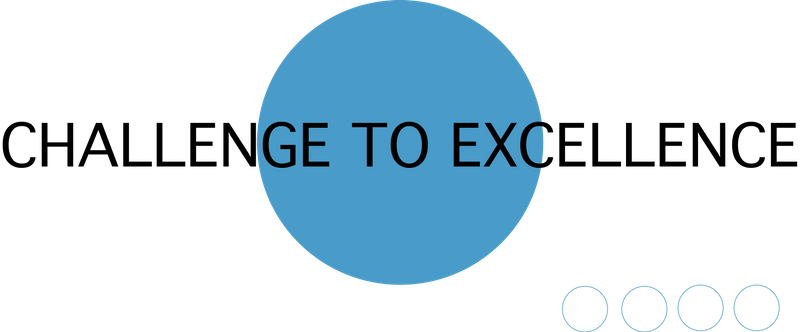Professional Executive Coaching helps leaders meet today's challenges
and
strengthen their leadership skills to
reach new heights
Our Focus
is to increase your leadership impact
Challenge to Excellence
Challenge to Excellence partners with executives, managers, teams and organizations to align
strategy, leadership and people to optimize performance. Our proprietary and success proven
methodologies help leaders significantly grow their impact, strengthen their leadership skills
and increase results.
WHY Executive Coaching with Challenge to Excellence:
REFLECT
A space to reflect
on
ideas and
challenges
INSIGHT
With someone who listens and purposefully challenges
GROWTH
Combined with a success proven
process
for
leadership growth
....
RESULTS
To achieve
the impact and results
you and your organization strive for
Our Purpose
Our purpose is simple – we help successful executives become exceptional leaders who
- generate results,
- have a strong and effective strategy in place
- create rewarding and sustainable relationships
- and have a positive impact on their businesses and stakeholders
by offering a unique coaching proposition where Marja combines her academically trained expertise (MSc Executive Coaching Hult Ashridge), genuine curiosity for continuous improvement and a success proven coaching process, to support you in being the best you can be.
No Growth -> No Pay
Coaching with
Guaranteed Measurable Improvement
COACHING
As a leadership/behavioral coach, Marja's goal is to help successful individuals have a positive change in behavior that is sustainable and that is recognized and acknowledged by others
Throughout her coaching career, she has coached numerous leaders and their teams using the unique combination of an academic relational executive coaching practice with a process based upon Marshall Goldsmith’s world-recognized philosophy and methodologies that “guarantees improvement” of key leadership goals as evaluated by pre selected stakeholders.
The distinctive approach to her coaching process is built around the belief paradigms of successful people and how successful people get even better. The leadership development process is tailored to take advantage of the positive aspect of successful people's beliefs in overcoming other aspects that can interfere with their improvement. This in combination with in-depth academic executive coaching knowledge Marja gained through my masters in executive coaching from the leading business university Hult Ashridge,
helps her clients gain deep insights and actually accelerates their growth process towards deep lasting impact.
The Marshall Goldsmith Stakeholder Centered Coaching® methodology is a simple methodology that is neither time consuming nor difficult to understand. The method is based upon years of working with successful leaders who were willing to do what it takes to becoming even better leaders in their future. Without question, anyone who follows the Stakeholder Centered Coaching® Process will improve in his or her leadership.
COACHING PROCESS
STEP 1: Define a Leadership Goal important to Leader and the Organization
Our methodology recognizes that one of the beliefs of successful leaders is the need to be the one choosing what to work on to improve and includes a cost/benefit analysis that helps the leader determine “Is it worth it” to proceed. Once a leader chooses a goal, the other decision tied to the chosen goal, is “Who are the relevant stakeholders?” Every goal has a set of stakeholders who are relevant as the leader’s behavior both affects them and they are clear beneficiaries of the leader. Before starting the development goal and list of stakeholders is approved by the leader’s manager.
STEP 2: Buy-in from Stakeholders to be part of the Process
As stakeholders are on the receiving end of leadership, the stakeholders’ perception of leadership effectiveness is pivotal. Therefore the Stakeholders are an integral part of this process and are recruited as valued members of the leadership change process. Either by the coach, or the leader, each Stakeholder is asked to actively participate in the leader’s improvement on an ongoing basis. They are asked to provide both feedback and feedforward to the leader and be willing to complete anonymous mini-surveys on the leaders improvement. The process starts with the Stakeholders providing the initial input on the Action Plan by providing suggestions to the leader and coach.
STEP 3: Stakeholder-Based Planning
An action plan is not developed based upon the coach’s expertise. The action plan is built from the initial request for suggestions from the Stakeholders. The Leader and the Coach collaborate to put together an action plan based on the input provided by the Stakeholders. The plan in part, or in total, is also put into a daily checklist for the leader to consciously keep the plan in his/her consciousness. The plan is distributed to the Stakeholders so they are aware of what to look for in providing feedback and further suggestions to the leader.
STEP 4: Monthly Collecting Stakeholder Input
The Leader uses the 7-Step Involving Stakeholder “do’s and don’ts” to monthly check in with each Stakeholder. During this brief 3 to 5 minute check-in the Leader asks for feedback on the prior 30 days and any suggestions moving forward for the next 30 days. The Leader captures this input and shares the results with the Coach. Together they collaborate on what to add, change, or modify for the coming month based upon Stakeholder input. Any new action items created for the Action Plan, this is communicated to all the Stakeholders.
STEP 5: Measure Leadership Change as perceived by Stakeholders
Half way through, and the end of the assignment, a formal mini-survey is conducted with the Stakeholders to assess the progress made on the development goal chosen by the Leader. This is an anonymous survey conducted in order to validate the improvement made by the Leader and to measure the change in Stakeholder perception. With the results of the mini-survey, the Leader does an After Action Review to pinpoint what happened, why, and what learning to take forward into the future.
WHY STAKEHOLDER CENTERED COACHING?

